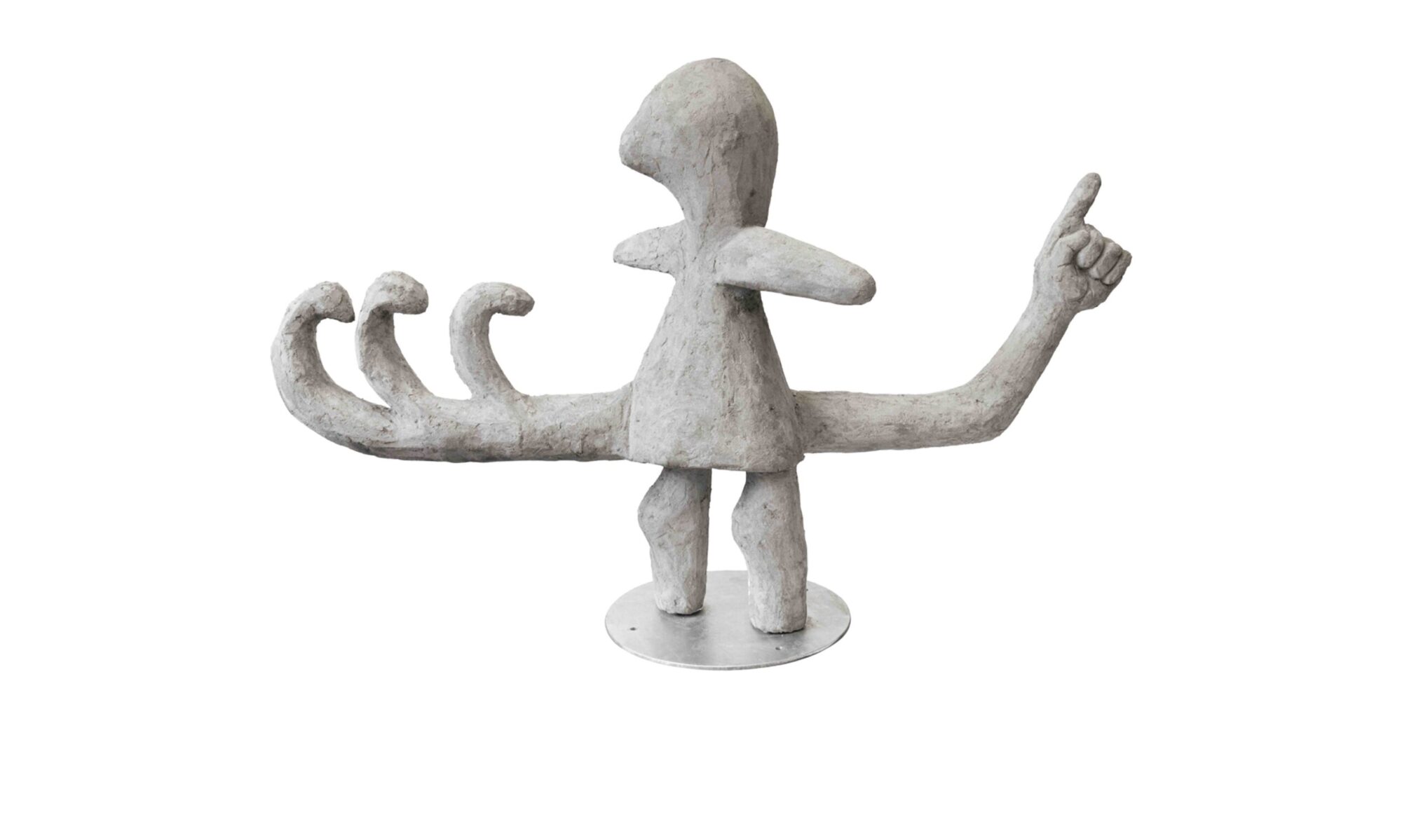Cubicle Series at Everard Read Cape Town / Circa Gallery | 5 – 17 August 2019
Eric Worby & Shireen Ally (2013: 458) describes “forgetting as co-constitutive of memory”.
Anne McClintock (1990:207) explains memory as a “device against oblivion, a strategy for survival”.
Elizabeth Loftus (2013:[sp]) contends that “Memory, like liberty, is a fragile thing”.
Milan Kundera (1996:4) alludes that “[t]he struggle of man against power is the struggle of memory against forgetting”.
In this exhibition Sophia van Wyk focuses on five personal memories:
Memory One: She participated in the The Falconer Foundry artist residency in KwaZulu-Natal for March, April and July in 2017. At the residency she developed and created a series of bronze artworks.
Memory Two: As part of a collaborative performance piece with Spanish artist, Mar Guerrero, van Wyk visited the Square Kilometre Array (SKA) outside of Carnarvon in the Karoo during November 2017. During the road trip to SKA they stayed over in Richmond at Modern Art Projects – South Africa where they engaged in various performance art pieces with the Karoo landscape as backdrop.
Memory Three: On 17 October 2018 van Wyk arrived at the Charles du Gaulle Airport to participate in the L’Air Arts residency in Paris.
Memory Four: During the L’Air art Residency in Paris van Wyk visited with German friend, Sina Eckhoff, and viewed the Memorial to the Martyrs of the Deportation on 19 October 2018.
Memory Five: On 19 October 2018 van Wyk took a boat trip with Sina on the Sein river in Paris.
Van Wyk’s paintings, sculptures and photographs flit and coalesce between these five memories. She works from photos taken on specific days then develops drawings to construct paintings and sculptures.
These artworks act as proxies for the memories and become semiotic ‘signs’. In semiotics, a ‘sign’ stands in for something other than itself. The ‘signified’ is the concept it represents. Van Wyk attaches the concept of a specific constructed memory to each artwork. Creating a ‘sign’ through an artwork is a way of archiving the memory and creating a coded visual language with these ‘signs’. Van Wyk constructs her paintings by layering and editing shapes. The sculpture forms are constructed similarly. This process is akin to the construction of a memory where one has agency in what one chooses and is able to remember. The shapes in the paintings are organic, unclear and unidentifiable, alluding to the struggled recollection of a hazy memory.
Van Wyk’s archiving of memories through her artworks is comparable to the digital Cloud that archives electronic information. She also uses clouds to create forms in her sculptures with strategies of automatism, chance and association. Sigmund Freud’s theory of memory is described by Worby and Ally (2013:463) as the “mnemonic architecture of psyche … [which] rests on the complex, inextricable interworking of memory as recollection and repression, as remembering and forgetting.”
Van Wyk’s obsession with memory and of archiving memories is reminiscent of the Jorge Luis Borges’s ([1962] 2007) short story “Funes the Memorious”. The lead character Ireneo Funes does not have the capacity to forget. Borges ([2007:65) finds that “this remembering without forgetting is monstrous”. Borges explains that “Funes’s mind becomes a useless mental catalogue of his memory” ([1962] 2007:65). Borges concludes the short story with “imagination requires forgetting, and that thought itself requires both memory and oblivion” (2007:20).
With regards to memory the psychologist Elizabeth Loftus (2013:[sp]) found that: [M]any people believe that memory works like a recording device. You just record the information, then you call it up and play it back when you want to answer questions or identify images. But decades of work in psychology has shown that this just isn’t true. Our memories are constructive. They’re reconstructive. Memory works a little bit more like a Wikipedia page: You can go in there and change it, but so can other people.
Within Loftus’s (2013[sp]) research she hypothesises memory as constructed, deeply subjective and edited. Van Wyk’s recollection of her memories act not as nostalgia, but rather as momento mori and a timeline of existence.
Sources consulted
Kundera, M. 1996. The Book of Laughter and Forgetting: A Novel. New York: Harper Perennial Modern Classics.
Loftus, E. 2013. How reliable is your memory? [O]. Available:
Accessed on 6 February 2018.
Mattera, D. 1987. Memory is the Weapon. Johannesburg: Ravan Press.
McClintock, A. 1990. “‘The Very House of Difference’: Race, Gender and the Politics of South
African Women’s Narrative in Poppie Nongena”. Social Text 25 (26):196-226.
Mémorial des Martyrs de la Déportation. 2019. [O]. Available
Accessed on 11 February 2018.
Memorial of the Martyrs of the Deportation. 2019. [O]. Available
https://en.parisinfo.com/paris-museum-monument/71195/Memorial- des-Martyrs-de-la-Deportation
Accessed on 8 February 2018.
Everything you wanted to know about the SKA. 2019. [O]. Available
http://www.ska.ac.za/about/faqs/#toggle-id-2
Accessed on 11 February 2018.
Worby, E & Ally, S . 2013. The disappointment of nostalgia:conceptualising cultures of memory in contemporary South Africa. Social Dynamics: A journal of African studies, 39:3, 457-480.









